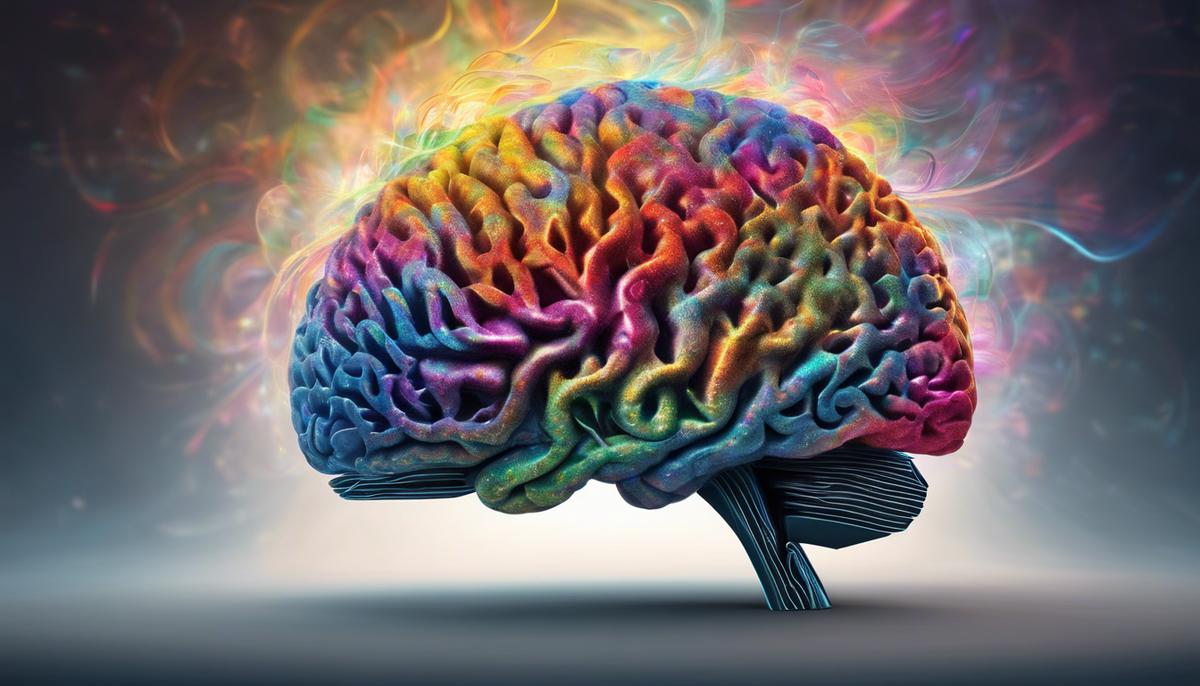Embarking on a journey through the labyrinth of our nocturnal mindscapes, we discover that dreams are far more than mere flickers of fantasy to be dismissed at dawn. At the intersection of neurology and narrative, the study of dreams opens a window onto the mind’s powerful undercurrents. This essay ventures into the deep recesses of the sleeping brain, weaving through the complex neurochemistry of the REM stage and mapping the neural pathways that give rise to our dreamscapes. It critically considers the psychological significance of these enigmatic experiences, exploring how the subconscious weaves images and emotions into scenarios that may resonate long after we awaken. As we navigate the convoluted terrain of dream research, spanning from Freudian foundations to the latest cognitive theories, we will entertain the compelling proposition that our dreams hold the power to shape our reality, drive innovation, and foreshadow the contour of our waking lives.
The Neuroscience of Dreams
Dream Manifestations in the Brain: Unveiling the Nocturnal Theater
The phenomenon of dreaming represents a captivating theater of the mind, one that has kindled scientific curiosity for centuries. Dreams are the enigmatic narratives that unfold in our subconscious during sleep, often reflecting a montage of places, people, emotions, and bizarre sequences that appear vividly real within the depths of our resting brain. Neurological studies have demystified some aspects of dreams by unveiling their cerebral underpinnings, shining a light on how these nightly escapades manifest within the intricate neural pathways.
At the heart of dream production is the brain’s remarkable ability to synthesize and replay experiences and emotions. During the rapid eye movement (REM) stage of sleep, there is a significant increase in brain activity that mirrors patterns seen in the waking state. This heightened activity is primarily orchestrated by the limbic system, which is instrumental in processing emotions, and by regions such as the amygdala and hippocampus. The prefrontal cortex, typically associated with reasoned judgment and reality testing, takes a less active role, potentially explaining the uninhibited and often irrational nature of our dreams. Neuroimaging studies reveal that during REM sleep, there is a confluence of neurotransmitters and alterations in cerebral blood flow, inviting a complex dance of waking-life residues and abstract sensations that coalesce into dreamscapes.
The synthesis of dreams, however, is not purely a random act but considered an essential cognitive process. It is speculated that dreams may serve as a cognitive sandbox, allowing the brain to explore creative solutions to problems or to process emotional events in a safe and unconstrained setting. The activation-synthesis theory postulates that dreams result from the brain’s attempt to make sense of random neural impulses, crafting cohesive stories from fragmented thoughts and memories. Furthermore, the continuity hypothesis suggests that dreams are a reflection of our waking life concerns, indicating a continuity of thought processes between our conscious and subconscious states. Regardless of their elusive nature, the dream sequences that punctuate our nights offer a rich tapestry for scientific exploration, providing insights into the complexities of the human brain and the enigmatic workings of the subconscious mind.
As research delves deeper into the neural correlates of dreaming, our understanding of this nocturnal mindscape continues to expand, revealing the boundless capacity of the brain to generate a parallel universe of experiences while our bodies rest. Dreams manifest as the brain’s convergence of memory, emotion, and imagination, a convergence that remains, to this day, one of the most profound and mysterious aspects of the human experience.

Psychological Significance of Dreams
Dreams, in psychological terms, hold an essence of mystery yet remain intrinsic to our cognitive and emotional landscapes. They serve as a cryptic dialect in the dialogue between our conscious and unconscious selves. Delving deeper into the psychological aspects, dreams have been posited to be reflective rehearsals for waking life, a concept known as the threat simulation theory. Developed by Antti Revonsuo, a cognitive neuroscientist, this theory proposes that the evolutionary function of dreaming is to simulate threatening events, thereby allowing individuals to rehearse the cognitive mechanisms required for threat perception and avoidance.
Embarking on the psychological interpretation of dreams, one cannot overlook the contributions of Sigmund Freud and Carl Jung. Freud’s psychoanalytic perspective suggests dreams are akin to a trove of repressed wishes and desires. The dream’s manifest content, the story we recall upon waking, is seen as a veil for latent content—the hidden psychological meanings. Meanwhile, Jung considered dreams to be messengers of the unconscious, aiming to balance and integrate our conscious realm with the uncharted territories of our psyche. Within Jung’s framework, dreams are symbolic representations striving to communicate crucial insights that reside beyond the conscious mind’s grasp.
The psychological lens also magnifies dreams as canvases for creative incubation, where ideas coalesce in radical configurations, free from the constraints of reality. During slumber, the loosened strictures of the waking intellect allow dreamscapes to become fertile ground for problem-solving and innovation. Not only do dreams reflect our inner world and facilitate creativity, but they also have a restorative function. The processing of emotional experiences through dreams is a natural aspect of human psychology and can contribute to emotional equilibrium and mental health.
In essence, dreams may be seen as the guardians of sleep—protecting the sleeper by enveloping them in a narrative so enthralling that it deters the distractions of the external world, ensuring the continuity and restorative qualities of sleep. This aligns with the sentinel hypothesis, which posits that dreams function to keep the brain alert enough to respond to external threats but not so alert as to cause awakening. It’s a fascinating balancing act that dreams achieve, keeping us tethered to a state of unconscious vigilance.

The Potential for Dreams to Influence Reality
The Influence of Dreams on Waking Life: Manifestations and Realities
Dreams are often perceived as mysterious echoes from our subconscious, their content ranging from mundane to fantastical. Despite their elusive nature, an important question that emerges is whether these nocturnal narratives can influence our waking lives and manifest into tangible reality. The exploration of this question intersects with psychological inquiry and personal introspection, presenting a captivating blend of potential influences that dreams may exert on our everyday experiences.
One compelling aspect of dreams is their potential to serve as rehearsals for real-life events, encompassing scenarios that span the spectrum of human emotion and interaction. This concept, borne from the threat simulation theory, suggests that dreams allow individuals to symbolically practice responses to various challenges, thereby enhancing problem-solving abilities when confronted with similar situations while awake. Such simulated experiences may lay a psychological groundwork that subtly steers decision-making processes and interpersonal dynamics in waking life.
Moreover, the transformative impacts of dreams on creativity and innovation should not be underestimated. It is not unusual for individuals to awaken with sudden clarity or novel ideas that were seemingly gifted to them by an intricate web of dream imagery. This spontaneous nocturnal brainstorming, often occurring during REM sleep, has been attributed to the ideational flexibility granted by the unconscious mind’s freedom from waking constraints. Notable historical figures, from scientists to artists, have credited dreams with providing the inspiration or solution to some of their most renowned works, underlining the profound impact that the ethereal realm of dreams can have upon concrete achievements and progress in the wakeful world.
Overall, while the precise mechanisms through which dreams affect our conscious reality remain only partially understood, it is evident that their influence extends beyond mere figments of the imagination. Dreams weave a complex tapestry of potential insights and inspirations that have the capacity to inform, prepare, and enrich our waking lives, reinforcing the notion that the landscape of our subconscious mind holds uncharted possibilities awaiting discovery and realization.

Our voyage through the nebulous realm of dreams brings us to the realization that while science has illuminated much of their inner workings, a vast expanse remains shrouded in mystery. The intricate tapestry of brain waves and psychological insights gleaned has undeniably heightened our appreciation for the rich tapestries spun each night as we slumber. However, the enigma of whether dreams can truly be harbingers of reality or merely echo the residue of our daily lives persists, challenging us to continue gazing into the hidden depths of our own minds. The intersections between the dreamed and the actual have yet to be fully charted, beckoning us to remain open to the revelations that slumbering neurons and unfettered imagination may hold for our waking choices and the unfolding of our individual destinies.
